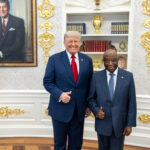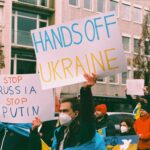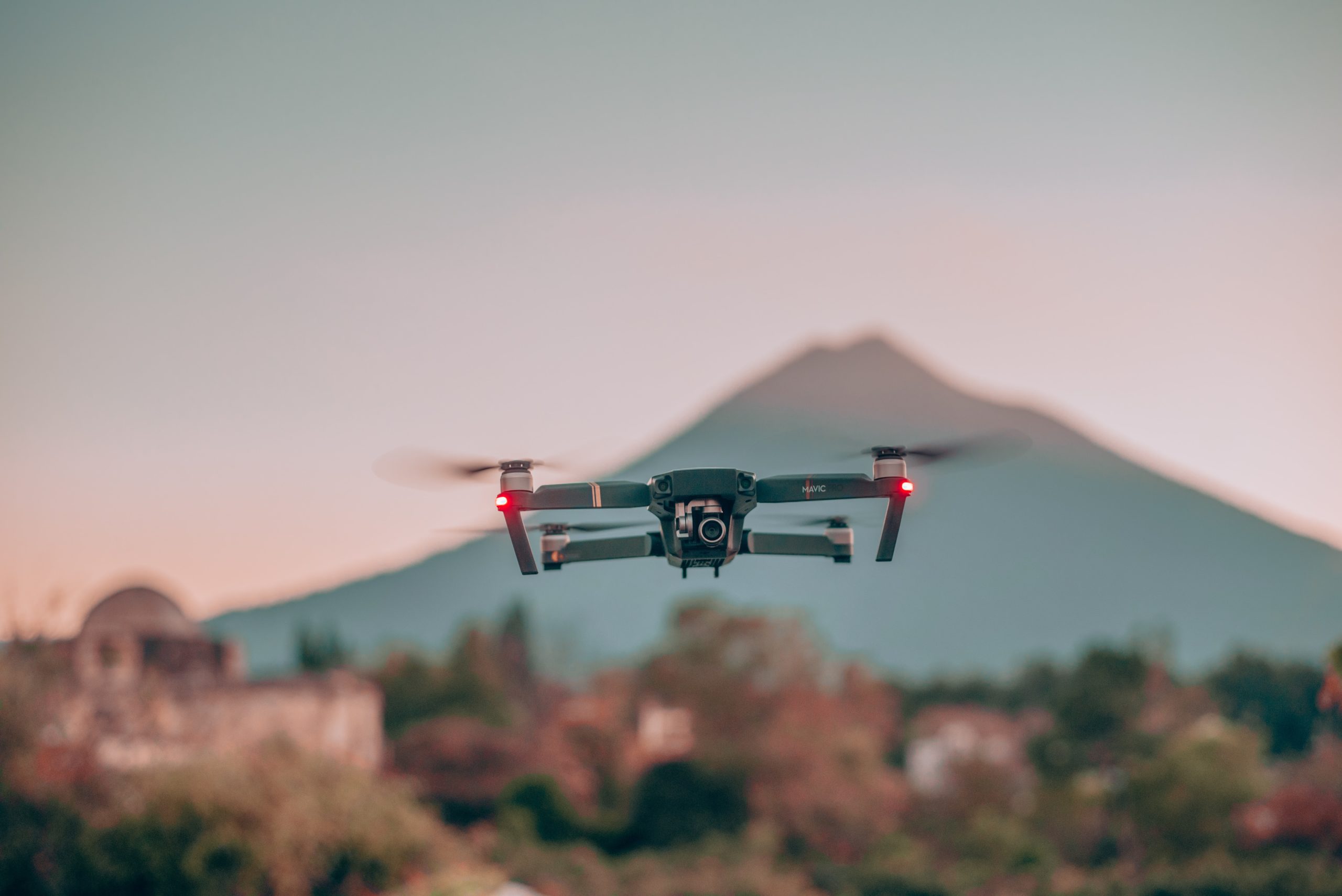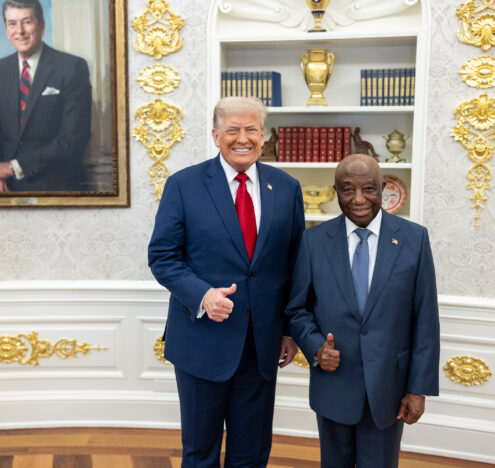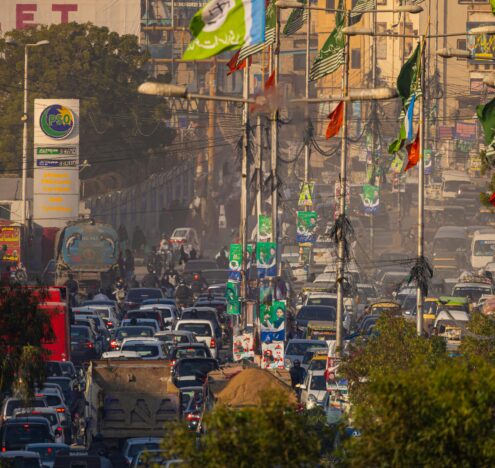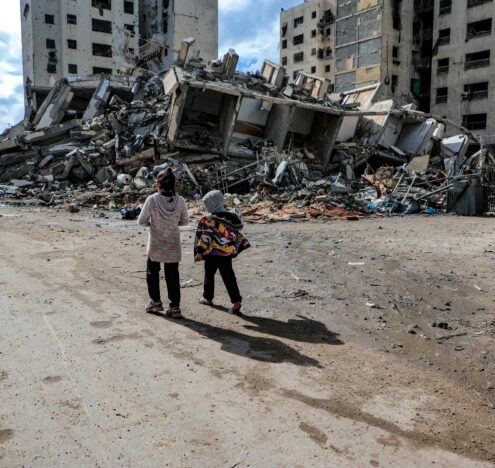At three minutes past two in the afternoon on September 11, 2001, we were all gathered around the various TVs dotted about in the BBC World Service in London. I was working as the assistant to the head of the BBC Russian Service, and as the team gathered in the newsroom to watch events unfold, we began speculating, as did the TV reporters, about whether the aircraft that had just flown into the North Tower of the World Trade Center had been a freak accident, when the second plane struck the South Tower and gave us the answer. There was a collective gasp, followed by a silent pause before the journalists in the room leapt into action while I kept them supplied with tea for the next few hours.
I didn’t know then of the impact that 9/11 would have on my life, my career, and my worldview, but as I gradually watched Western values collapse in on themselves in the desperate scramble to respond to the events of that day, the lifelong assumptions I’d held about reality itself would be challenged and forever transformed.
This 20 year anniversary is a moment to pause and reflect, not just on that day, but on the response to those events by the United States and its allies, and the implications for the future of humanity. A “state of exception” has become the norm, fostering conditions under which the human rights of “others” are violated and denied with impunity.
The Global War on Terror (GWOT), initiated by President George W. Bush and continued on by Presidents Barack Obama, Donald Trump and now Joe Biden, has left a legacy of suffering that includes the disastrous and costly wars in Iraq and Afghanistan, extraordinary rendition, enhanced interrogation techniques, indefinite detention without trial at Guantanamo Bay, where 39 detainees still languish, and President Obama’s favourite, the drone assassination program.
America’s liberal use of armed drones, much used in the skies above Afghanistan, Pakistan, Yemen, Syria, Iraq and elsewhere has opened a pandora’s box in the development of autonomous weapons technology — and it has done so at the expense of human rights and ethics. Over the last 20 years, hundreds of thousands of unseen victims have been dehumanized through the moral disengagement of liberal populations sold on the “good guys vs evil doers” rhetoric of the GWOT. When will this indiscriminate killing end? And when will liberal governments be held accountable for their actions? Twenty years on, these questions are not simply questions but a call to action: We, ordinary people, deserve answers.
THE CASES OF “MISTAKEN IDENTITIES”
Tariq Aziz was described by his uncle as “just a normal boy who loved football.” He was 16 years old when he was killed in Pakistan by a US drone strike, along with his 12-year-old cousin, in 2011.
Mamana Bibi was a grandmother and midwife in her mid 60s who had “delivered hundreds of babies in her community” and was killed by a US drone strike in North Waziristan, Pakistan in 2012.
Malana was a 25-year-old Afghan woman who had just given birth to her second child. She was killed along with her father-in-law, mother-in-law, and sister-in-law when a US drone struck their car in Khost district in eastern Afghanistan.
Khalid, a 23-year-old Yemeni, studying English in Malaysia, was killed while on a visit to his family in Shabwa Province, when a drone struck him, his two cousins, and 5 other men.
These above are just a few of the 900,000 victims estimated by Brown University’s “Cost of War” project that in its most recent report looked at the number of deaths directly attributed to post–9/11 wars and counterterrorism operations in Iraq, Afghanistan, Pakistan, Yemen, and Syria. Almost half of the deaths were innocent civilians like Mamana and Tariq. It is more likely that the total toll of the response to the 9/11 attacks would run into the millions, given that the data does not include indirect deaths. It also doesn’t account for the living victims: Permanently injured, displaced, orphaned, widowed or mentally scarred by the “ethical violence” meted out by the “good guys.”
The Obama administration always insisted that drones were the weapon of choice due to their “surgical precision.” However, Agnes Callamard, former UN Special Rapporteur, dismissed this as a “myth — and there are countless examples to back her claim, including a drone strike in Yemen that struck a wedding convoy in 2013, killing 12 members of the wedding party. In another instance, 42 men were killed by two US drones in Pakistan in 2011 as they attended a “jirga” (a traditional meeting) to discuss a dispute over a nearby chromite mine. Those attending were local elders and tribal leaders.
The Global War on Terror depends on a postcolonial narrative, in which the right to human rights exists only for the so-called “civilized.”
One of the first uses of a drone to kill a targeted individual was reportedly in 2002, when the CIA fired a missile at a “tall man” in the Paktia province of Afghanistan. They believed it was Osama Bin Laden. It wasn’t. It was a local man collecting scrap metal with two of his friends, who were also killed along with him. The Pentagon soon acknowledged that Bin Laden was not amongst them, saying “We’re convinced that it was an appropriate target” but “we do not know yet exactly who it was.” This case of mistaken identity would not be the last, and similar patterns of justification would repeatedly be used that, despite no evidence of terrorist involvement, “there was something untoward” about them.
The New York Times reported in 2012 that officials in the Obama administration would joke that if the CIA saw “three guys doing jumping jacks,” it was assumed to be a terrorist training camp. Assumptions like these, so breezily brushed off, are the prerogative of a small number of liberal states that use a cloak of civilization to meter out “ethical” forms of violence on others. The GWOT, therefore, depends on a postcolonial narrative, in which the right to human rights exists only for the so-called “civilized.” President Bush himself described it as “civilization’s fight.” This rhetoric serves to dehumanize Arabs and Muslims and morally disengage US and European citizens from the suffering of those no longer considered human.
Drones are instruments of a “covert assassination program” where victims are hunted at a distance, their faces unseen, identities unknown, and deaths unmourned. Influential psychologist, Albert Bandura suggests, “It is easier to harm others when their suffering is not visible.” There is, therefore, a sense that the horrors inflicted on 9/11 sanctioned a benevolent barbarity in response.
THE ETHICAL DILEMMA
Drones and unmanned systems are distinctive from other forms of brutality, in the distance between the victim and the aggressor, who is safely situated thousands of miles away from the action, in a remote “cockpit” in the Nevada desert. There is no doubt that the lack of risk to drone “pilots” is a major contributor to their continued use, but this distance gives rise to concerns that killing has become too easy. The closer one is to the opponent, the greater the internal resistance to killing because it is not possible then to deny his humanness. As Grégoire Chamayou said in his 2015 work, Drone Theory, “When one looks an opponent in the eye,” you will know that he is “young or old, scared or angry.”
The anonymity of killing through a computer screen has led to reports of a gaming mentality, which has merged with the dehumanizing rhetoric of the war on terror to provide a deeply troubling terminology within the operations centers. For example, the term “bugsplat” originated during the Iraq war and is used to signify a successful attack, since the dead bodies of victims killed in strikes resembled squashed bugs on the screen. The most alarming still is that the emotional disengagement in inflicting harm on others has opened the door to a new world in which humans are removed from the operation altogether. The rapid development of unmanned and autonomous weapons that can be pre-programmed to kill, has led to a proliferation of “killer robots” around the world.
In its July 2021 report, Drone Wars UK names 10 states that have used military drones outside of their own borders: US, Israel, UK, Iran, Turkey, Pakistan, Saudi Arabia, UAE, France, and Azerbaijan. But states are not the only ones getting their hands on these remote-controlled killing machines. Drone Wars UK has documented several incidents of non-state actors, such as ISIS, Hezbollah, and the Houthis successfully using small weaponized drones, and has been calling for a more effective ethical and legal framework for their use. Turkey, the United States, China, and Israel are the biggest exporters in the armed drone marketplace, and the United States is developing a software system called “Skyborg” that would enable drones to fly autonomously.
According to a recent UN report, the use of a lethal autonomous weapon, in an active hostile operation, has already taken place. In 2020, a Turkish manufactured loitering munition was able to follow and attack a target in Libya without any data connectivity with a human operator. In the same year, the US Defense Advanced Research Projects Agency hosted the “Alpha Dogfight Trials,” in which an artificial intelligence algorithm was pitted against a human pilot in a series of F-16 fighter jet dogfights. The result was 5–0 to the AI pilot.
These developments in lethal autonomous weapons systems have been described by UN Chief, Antonio Guterres as “morally repugnant.” There are a range of ethical issues in essentially handing over the decisionmaking process in a “kill or don’t kill” situation to a machine. Those involved in the Alpha Dog fight trials noted that what gives a machine the edge over a human is its lack of fear for its own safety. But along with a lack of fear comes a lack of empathy and compassion — and a lack of humanity, something that cannot be pre-programmed.
The lack of human presence and control also creates a reality gap and an accountability gap. Leaders like Obama espoused their ability to minimize both civilian casualties and numbers of body bags coming home, while the true toll on civilians remained hidden from view. US Intelligence Analyst and whistleblower, Daniel Hale, was recently sentenced to 45 months in prison for revealing that, in just one 5-month period, 90% of the victims of the drone strike program were innocent bystanders. How do the families of those civilians find justice and who should be held accountable?
THE URGENT NEED FOR ACCOUNTABILITY
The issue with killing by remote control is the number of individuals involved in the process leading up to the strike; policymakers, senior CIA officials, intelligence agents and programmers, before the drone pilot finally presses the button to fire. Fully autonomous weapons have the added complexity of potential software failure, mistakes in programming and a total lack of human control at that moment of taking another human life.
The International Committee for Robot Arms Control said in their mission statement: “machines should not be allowed to make decisions to kill people,” and an international community of governmental experts met in Geneva in August 2021 to discuss a way forward to a legally binding framework that would limit the use of fully autonomous weapons.
Twenty years on, I reflect on how the events of that day and the West’s response to it influenced my own life choices, leading me to the Middle East and six years at Al Jazeera, a visit to Yemen, and a Master’s Degree in Human Rights. I am now a freelance writer focusing on the GWOT’s impact on human rights and the implications of a proliferation of killer robots. I believe it is time for us all to see through the rhetoric, hold our governments accountable for the actions they take in our name, and join the call to limit the use of unmanned drones and lethal autonomous weapons.
In the 9/11 attacks, 2977 innocent people were killed. In response, the policies of the GWOT have been responsible for the deaths of at least that number for every month of the last 20 years. The anniversary of the attacks saw a media flooded with stories of those who died in the Twin Towers, the Pentagon or Flight 93. As right as that is, who will remember Tariq, Mamana, Malana, Khalid or the millions of other innocent victims around the world? If we want to avert the terrifying prospect of a world of killer robots and avoid another 9/11, we all should.
Pauline Canham is a freelance writer focused on the human rights impacts of the global war on terror, drones and autonomous weapons. Previously, she spent 20 years in the broadcasting sector, working on projects for the BBC and Al Jazeera.
“The Long Tunnel” is a series of articles reflecting on the impact of September 11 and how it has shaped the world we live in today. You can read more in the series here.





